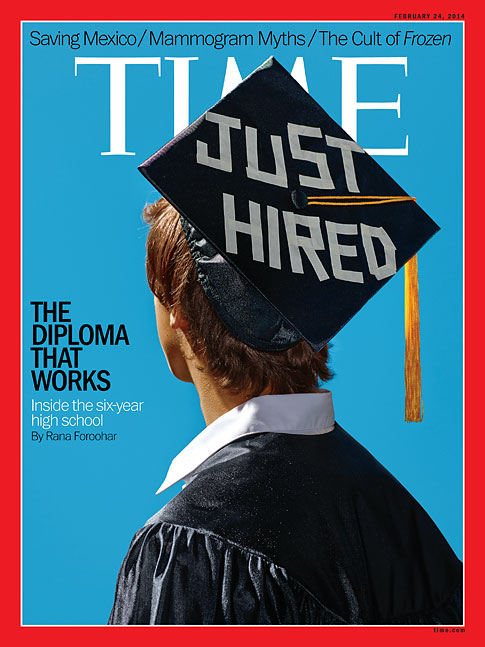
(3 of 7)
Davis' comment is striking because historically in the U.S., an education tied to industry has been considered second-rate. Back in 1917, under the Smith-Hughes Act, Congress set up a pool of funds for vocational education (mainly for farm kids) that was separate from that of high schools. The idea was to avoid raiding high school funds at a time when graduation rates, only 6% in 1900, were beginning to increase. But the unintended consequence was to separate career-based education from the rest of high school, effectively downgrading it. Even when the two tracks were reintegrated in the 1960s, vocational education was still seen as a dumping ground for less fortunate students. Meanwhile, even traditional high school hasn't necessarily led to a better path: while 70% of high school graduates today go on to higher education, only 30% of young Americans make it through a four-year college, and only 10% graduate from a two-year institution, despite 20 years of educational reform.
Those reforms have included things like the push for Common Core standards, charter schools and in some cases closer ties between schools and business. Twenty years ago, Oregon, faced with students graduating with no marketable skills, tried to make all high schools focus on career majors--but then ran into pushback from families who didn't want their kids off the "academic" track. Other attempts in different parts of the country to connect educators and job creators failed because employers who were approached about offering internships or helping schools create better curriculums couldn't see what use 16-to-19-year-olds could possibly be to them.
Today, no one can ignore the disconnect between how the U.S. educates its kids and the needs of the U.S. economy. There is a youth unemployment crisis, one that continues to have profound effects particularly on young people of color with limited education. (In October, only 5% of black male high school graduates looking for work found a job.) There are large and growing asymmetries in the labor market: Harvard Business School professor Rosabeth Moss Kanter calculates that a third of the jobs lost during the Great Recession reflect a mismatch between the skills employers need and those that workers have. There's a $1 trillion student-debt bubble being faced by kids entering what's still the toughest labor market in a generation. There's a structural change in the economy to favor technology-based skills, a shift that actually makes a career-oriented STEM education more and more attractive and makes tech-savvy 16-to-19-year-olds more interesting to firms. And there are a growing number of blue chips, like IBM, that believe getting involved in education is good for both their long- and short-term business models: it simultaneously addresses their skilled-labor shortage and helps build a stronger middle class that will spend on their products in the future.
EDUCATION THAT WORKS
That's the new landscape in which students, educators, businesses and governments are operating. And it's why the urgency over connecting all the public and private dots is growing.
